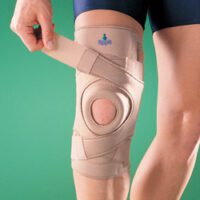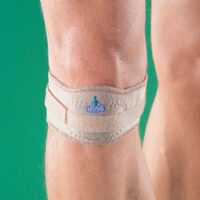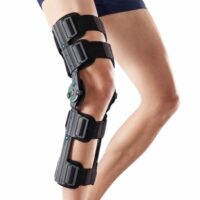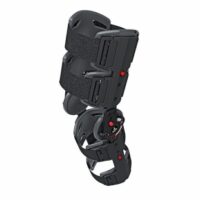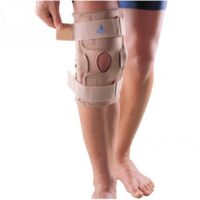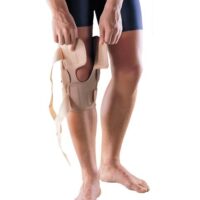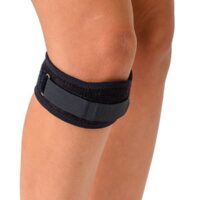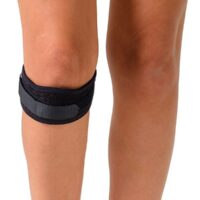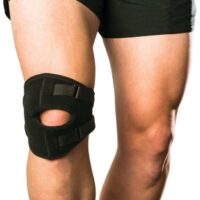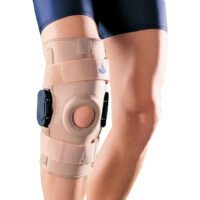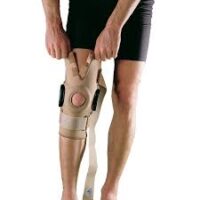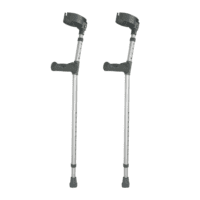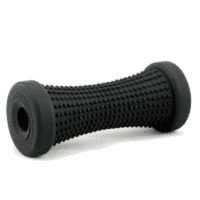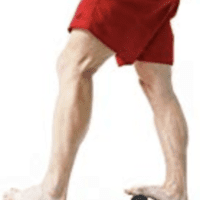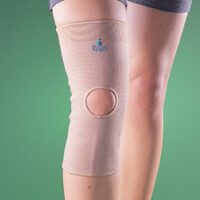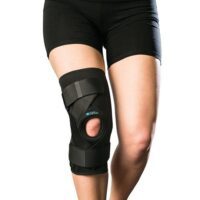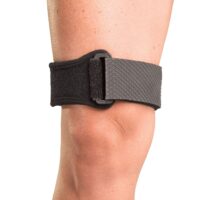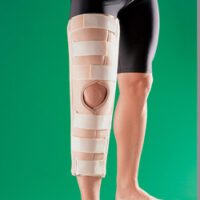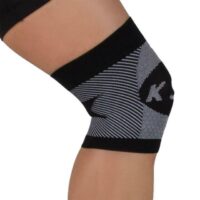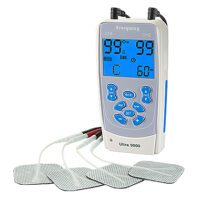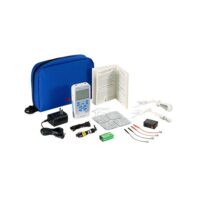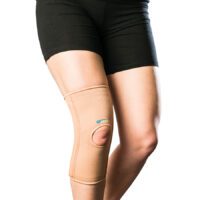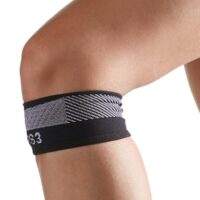Popliteus Tendinopathy
Article by John Miller

Managing Popliteus Tendinopathy
What is Popliteus Tendinopathy?
Popliteus tendinopathy, an often overlooked yet crucial condition affecting the knee, involves the popliteus muscle situated at the back of the knee. This article explores the causes, symptoms, diagnosis, and effective management of Popliteus Syndrome, highlighting the importance of physiotherapy.
Causes of Popliteus Tendinopathy
This syndrome commonly arises from the overuse of the popliteus muscle. Key causes include:
- Regular involvement in intense activities, such as running.
- Traumatic injuries to the knee.
- Ongoing knee instability.
- Muscle imbalances in the lower limb.
- Inappropriate exercise techniques.
- General fatigue leading to muscle strain.

Recognising the Symptoms
Key symptoms of Popliteus Tendinopathy include:
- Pain around the outer and back areas of the knee.
- Swelling or redness on the outer side of the knee.
- Difficulty and discomfort during knee movement.
- Feelings of weakness or instability in the knee.
- Clicking sounds within the knee joint.
Diagnosis by a Professional
A thorough examination by a physiotherapist or sports doctor is essential for diagnosis. MRI or ultrasound may be used for accurate diagnosis. Timely identification is key for effective treatment.
Physiotherapy: A Multifaceted Approach to Treating Popliteus Tendinopathy
Physiotherapy isn’t just about addressing the immediate symptoms of Popliteus Tendinopathy; it encompasses a comprehensive approach that offers numerous benefits for long-term knee health and overall wellbeing. Let’s delve into how physiotherapy can significantly impact your recovery journey.
1. Tailored Care and Guidance
Every case of Popliteus Tendinopathy is unique, and physiotherapy recognises this by offering personalised treatment plans. These plans are crafted based on individual assessments, ensuring you receive the most effective treatment for your specific condition.
2. Managing Pain without Heavy Reliance on Medication
A key benefit of physiotherapy is its ability to alleviate pain without a heavy reliance on medication. Techniques such as manual therapy, targeted exercises, and the use of modalities like ultrasound and TENS (Transcutaneous Electrical Nerve Stimulation) can effectively reduce discomfort and improve knee function.
3. Strengthening and Conditioning
Physiotherapy goes beyond pain relief to strengthen and condition the knee and surrounding muscles. This approach not only aids in recovery but also helps in preventing future injuries. Strengthening exercises are designed to improve muscle balance and joint stability, crucial for knee health.
4. Restoring Function and Mobility
Regaining full function and mobility is a primary goal of physiotherapy. Through a series of exercises and treatments, physiotherapists work to restore the knee’s range of motion, ensuring you can return to your daily activities and sports with confidence.
5. Holistic Health Improvement
Physiotherapy isn’t limited to physical recovery; it also contributes to overall health and wellbeing. By focusing on body mechanics, posture, and movement techniques, it not only aids in recovery but also enhances your quality of life. This holistic approach can lead to better body awareness and healthier lifestyle choices.
6. Education and Prevention Strategies
An integral part of physiotherapy is education. Physiotherapists provide valuable insights into managing your condition, understanding your body’s signals, and adopting preventive measures. This knowledge empowers you to take an active role in your health and prevent recurrence.
7. Support and Motivation
Recovery from Popliteus Tendinopathy can be challenging. Physiotherapists offer ongoing support and motivation, helping you stay committed to your treatment plan. Their expertise and encouragement can be pivotal in achieving a successful recovery.
Conclusion: A Partner in Your Recovery
In summary, physiotherapy offers a comprehensive solution for managing Popliteus Tendinopathy. It’s not just about treating symptoms but about empowering you with the tools, knowledge, and support for a complete recovery and a healthier future. From personalised care plans to holistic health improvement, physiotherapy stands as a cornerstone in the journey to overcome knee issues and enhance overall wellbeing.
Remember, if you’re experiencing symptoms of Popliteus Tendinopathy or any knee discomfort, seeking advice from a qualified physiotherapist is a wise step. Their knowledge can guide you towards a quicker, more effective recovery, and help you maintain optimal knee health in the long run.
Related Articles
Knee Pain Causes
A Comprehensive Guide
Knee pain is often a symptom of underlying issues ranging from acute injuries to systemic health conditions. Identifying knee pain causes is essential for effective treatment. This guide offers an overview of potential culprits, providing a pathway to understanding and addressing your knee discomfort.
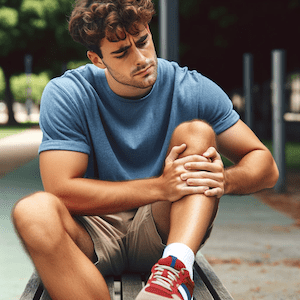

Knee Ligament Injuries
Ligament injuries, such as ACL and PCL tears, are significant knee pain causes. They can lead to instability and severe discomfort, requiring prompt medical evaluation.
- ACL Injury
- PCL Injury
- MCL Sprain
- LCL Sprain
- Posterolateral Corner Injury
- Superior Tibiofibular Joint Sprain
- Symptoms of a Torn Ligament
- Walking with a Torn Ligament
ACL Injuries
An ACL injury is a common sports-related knee injury that can lead to long-term knee pain and require surgical intervention.
- Is Surgery Needed?
- Living Without an ACL
- Main Function of the ACL
- Untreated ACL Injury
- Symptoms of an ACL Tear
- Diagnosing an ACL Tear
- Best Surgery for ACL Tear
- Post-ACL Reconstruction Rehabilitation
Knee Meniscus Injuries
Meniscus tears, often caused by twisting or turning quickly, are prevalent knee pain causes, with treatment options varying based on severity.
Kneecap Pain
Pain in the kneecap can arise from various conditions, affecting your ability to engage in daily activities comfortably.
- Chondromalacia Patella
- Fat Pad Syndrome
- Patella Dislocation
- Patellofemoral Pain Syndrome
- Patellar Tendinopathy
- Quadriceps Tendinopathy
- Osgood Schlatter’s Disease
- Sinding Larsen Johansson Syndrome
Knee Arthritis
Arthritis is a leading cause of knee pain, particularly in older adults, with symptoms that can significantly impair quality of life.
Knee Tendon Injuries
Tendon injuries can result from overuse or sudden, high-impact activities, contributing to ongoing knee pain.
Muscle Injuries
Muscle strains and related conditions are common knee pain causes, especially among athletes and active individuals.
- Corked Thigh
- Thigh Muscle Strain
- Hamstring Strain
- ITB Syndrome
- Popliteus Syndrome
- Muscle Strain
- Muscle Cramps
- DOMS – Delayed Onset Muscle Soreness
Knee Bursitis
Inflammation of the bursae can cause significant knee pain, often requiring targeted treatment to reduce symptoms.
Children’s Knee Conditions
Young athletes can experience specific knee conditions related to growth and activity levels.
Other Knee-Related Conditions
Various other conditions can lead to knee pain, necessitating a broad understanding of potential knee pain causes.
- Baker's Cyst
- Runner’s Knee
- Reducing Knee Stress for Runners
- Plica Syndrome
- Fibromyalgia
- Stress Fracture
- Overuse Injuries
- Restless Legs Syndrome
Knee Surgery
In some cases, surgical intervention may be the best option to address certain knee pain causes effectively.
Seek Professional Advice
For tailored information regarding your knee pain, consult a healthcare professional with experience in knee conditions, such as a knee physiotherapist, sports physician or knee surgeon. They can provide a personalised assessment and treatment plan to address your specific needs.
Knee Pain Products & FAQs
A variety of products can support knee pain management. Browse our selection and read our FAQs to learn more about how to alleviate knee discomfort. More info: Knee Pain Products & FAQs
With this guide, you’re better equipped to understand the various knee pain causes and take the first step towards recovery. Remember, early intervention by a skilled physiotherapist can significantly improve your outcomes and assist in returning you to a pain-free, active lifestyle.
Knee Pain FAQs
Knee pain is a widespread issue, impacting individuals of varying ages and lifestyles. Causes range from injuries and wear and tear to conditions like arthritis. This FAQ section aims to provide insights into knee pain, covering diagnosis, ligament issues, ACL injuries, meniscal injuries, age and arthritis concerns, and pain relief methods through exercise and treatment.
Feel free to click on the questions to for deeper discussions into each topic.
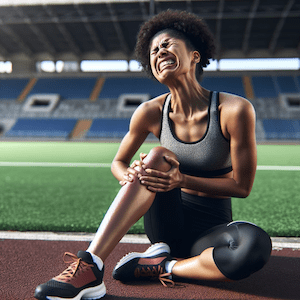

Diagnosis Related
How Can I Determine If My Knee Injury Is Serious?
- Learn to assess the severity of your knee injury based on symptoms and situations.
How Can I Identify The Type Of Knee Injury I Have?
- Discover how different knee injuries manifest and what signs to look for.
When Should I Seek a Physiotherapist or Doctor for My Knee Injury?
- Find out the right time to consult professionals for your knee concerns.
Is Knee Clicking a Sign of a Serious Condition?
- Understand what knee clicking indicates about your joint health.
When Should I Consider Getting a MRI for My Knee?
- Learn about the circumstances when an MRI becomes necessary.
Why Has My Knee Suddenly Started Hurting?
- Explore potential reasons behind sudden knee pain.
Why Does My Knee Hurt On The Inner Side?
- Identify causes of inner knee pain and when to seek help.
Knee Ligament Related
What Are The Common Symptoms of a Torn Ligament in the Knee?
- Recognise the signs of a torn knee ligament.
Can I Walk With A Torn Ligament In My Knee?
- Understand the feasibility and risks of walking with a torn ligament.
ACL Related
What are the Consequences of Not Getting Surgery for an ACL Injury?
- Learn about the long-term effects of untreated ACL injuries.
What Are The Symptoms Of An ACL Tear?
- Identify the key signs of an ACL tear.
Meniscus Related
Is Surgery Necessary for a Meniscal Injury?
- Discover when surgery is essential for meniscal injuries.
Can a Torn Meniscus Heal Without Surgery?
- Find out if meniscal tears can heal naturally.
Age & Arthritis Related
At What Age Do Knee Problems Typically Begin?
- Learn about the onset age for common knee problems.
What are the Common Symptoms of Arthritis in the Knee?
- Identify arthritis symptoms in the knee.
Running Related
What are Some Ways that Runners Can Reduce Knee Stress?
- Explore methods for runners to minimise knee stress.
Knee Treatment & Exercise Related
Is Walking Good For Knee Pain?
- Understand the benefits of walking for knee pain.
What are Some Effective Ways to Relieve Knee Pain?
- Discover various methods to alleviate knee pain.
How Much Walking is Recommended for Individuals with Knee Pain?
- Learn the ideal walking duration for those with knee pain.















